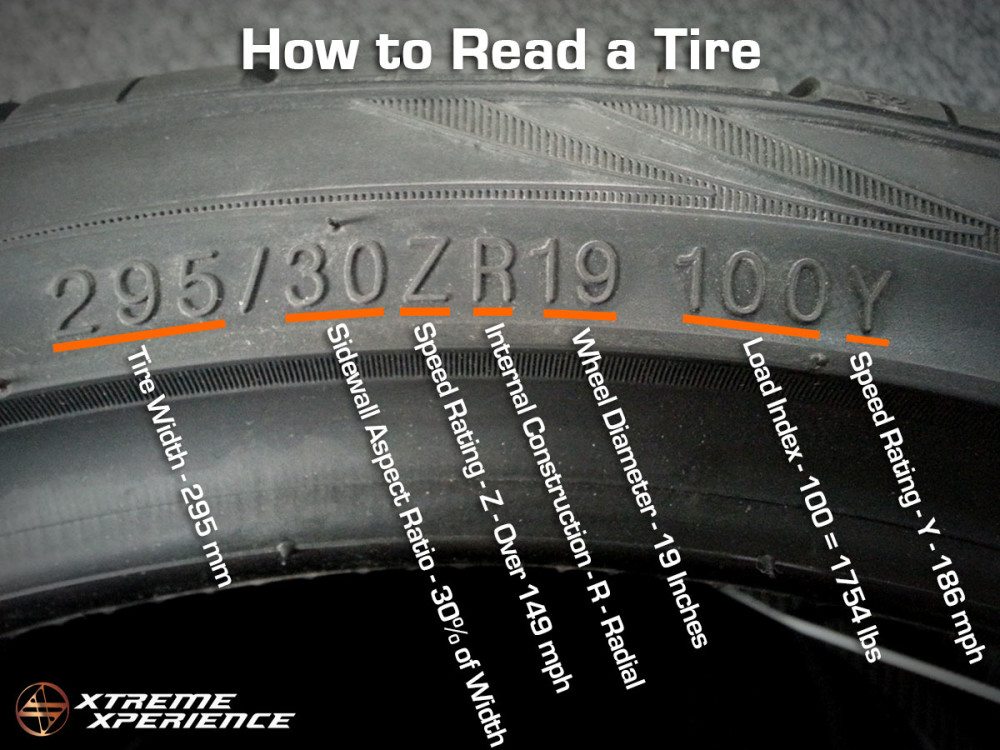
Ever wondered what all those numbers and letters mean on the side of a tire? Knowing how to read a tire is critical to putting the correct tires on a vehicle for track or street use and ultimately enhancing a car’s performance and safety. We use high-end sport tires, so when you drive one of our supercars on a racetrack, you’ll probably experience more grip than you ever have. Trusting your tires is crucial to fully experiencing the capabilities of the vehicle. In this example, we’ll break down the components of a rear tire from our Lamborghini Gallardo LP560-4.
So, what does it all mean?
- Tire Width – 295 – The distance from sidewall to sidewall (in millimeters). The larger this number, the wider the tire. This tire is 295 mm across.
- Sidewall Aspect Ratio – 30 – Section height compared to width. The lower the number, the lower the profile. In this example, the sidewall is 30 percent of the section width.
- Speed Rating – Z – This only appears on Z-speed rated tires which means they can operate over 149 mph (More to come on Speedrating)
- Internal Construction – R – The “R” identifies the tire’s internal construction. In this case, “R” stands for radial contruction. Radial tires are the most popular type of tire on the road.
- Wheel Diameter – 19 – This is the wheel’s diameter (in inches) for which the tire was sized. This wheel is designed to fit a 19-inch wheel.
- Service Description – 100Y – A service description identifies the tire’s load index and speed rating
- Load Index – 100 – The load index is a measurement of how much weight each tire is designed to support. The larger the number, the higher the load capacity. A 100 rating will support a load up to 1764 lbs.
- Speed Rating – Y – The “Y” indicates that the top speed of the tire has been tested in excess of 186 mph.
- Treadwear (Not Pictured) – This is a rating of the tread’s durability, as tested against an industry standard. These tires have a 280 treadwear rating (the higher the number, the longer the tire will last). Racing tires range from 0-40 while all season tires can be above 700.
- Traction (Not Pictured) – This is a rating of a tire’s traction when tested for straight-line braking on a wet surface. These tires have an AA rating (AA signifies the best traction performance and C indicates the worst). AA-rated tires will hold g-forces above 0.54.
- Temperature (Not Pictured) – The temperature rating refers to the ability of the tire to withstand heat under high speeds. These tires have an “A” temperature rating (A signifies the best and C is the worst). A-rated tires will hold up to the temperatures associated with driving at speed over 115 mph.



